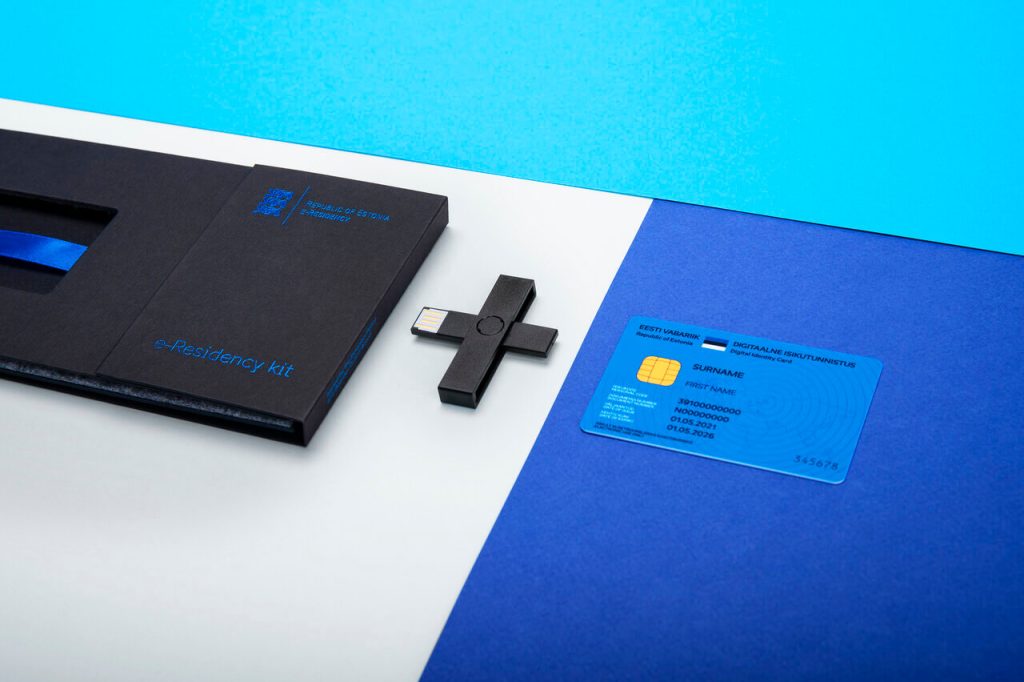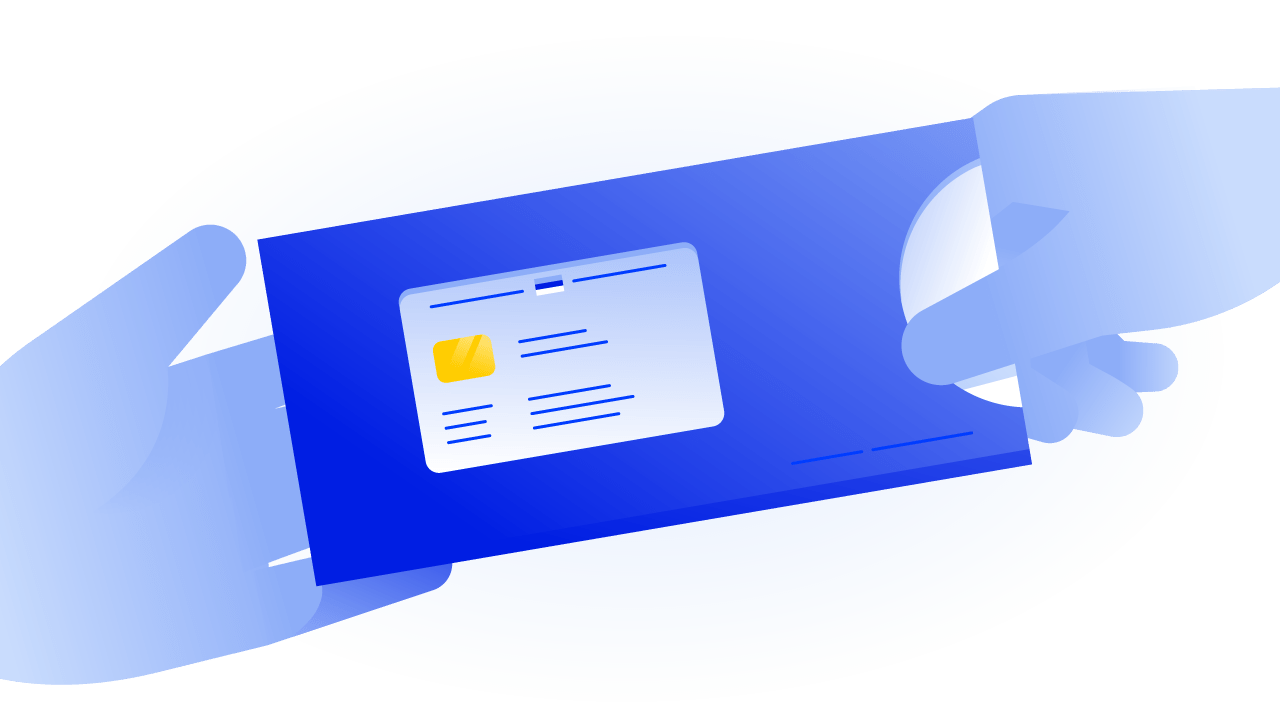what are qualified electronic signatures?
An e-Residency digital ID allows you to make qualified electronic signatures, as legally strong as handwritten, but much more efficient.

Most people understand that e-Residency is a digital gateway to start a business in Estonia and run it remotely from anywhere. But do you understand how this 'gateway' works in practice?
Put simply, it's the e-Residency digital identity card, the digital certificate it provides, and how it interfaces with Estonia's e-government infrastructure. Having an e-Residency digital ID allows secure, digital authentication in Estonian e-service portals. For example, logging into the e-Business registry to start a company.
But these powerful little blue digital IDs also enable qualified electronic signatures (QES), the highest 'trust level' of digital signature according to European standards. Using QES, e-residents can sign legal contracts and confirm transactions with the same legal standing as handwritten signatures. QES thus allow e-residents to run their businesses in the safest way possible. But given the time and paperwork saved, it also makes administration quicker and easier. This article sets out how and why this is the case.
Electronic signatures under European Union law
In the EU, the legal framework for electronic signatures is set out in the eIDAS Regulation (910/2014) (eIDAS). It provides a number of standards to ensure that electronic signatures can be created and validated throughout Europe.
What is an electronic signature?
According to the European Commission:
There are three types of electronic signatures laid out in the eIDAS. The European Commission differentiates them by 'different trust levels': simple, advanced, and qualified.
- Qualified electronic signatures or QES feature the highest trust level and have the same legal standing as a handwritten signature. They require the use of a qualified signature creation device and are based on a qualified certificate for electronic signatures.
- Advanced electronic signatures lie somewhere in the middle when it comes to trust. They identify and provide control to the signatory, and any changes to the signature data are detectable. Adobe Sign and DocuSign are examples of advanced electronic signatures.
- Simple electronic signatures have the lowest trust level and essentially take the form of associated electronic data used by the signatory to indicate their consent. They include for example typing your name under an email.
What can qualified electronic signatures be used for?
QES can be used in a variety of situations, including the types of cross-border tasks e-residents need to undertake for their Estonian companies. Examples include:
- Signing legal agreements (service contracts, sale or purchase, employment, lease, insurance),
- Confirming transactions (eCommerce or banking transactions),
- Undertaking public administration tasks (e-Business register changes, declaring taxes, requesting information).
QES have a higher trust level than Adobe Sign and DocuSign (which provide advanced electronic signatures). QES also add electronic time stamps to every signature or transaction. This not only protects from one party making changes after documents are signed, but also provides legal certainty and defendability in court.
Electronic signatures with your e-Residency digital ID are QES
All Estonian digital IDs - for citizens, residents and e-residents - contain the necessary qualified electronic certificates to offer QES.
The digital signatures available with your e-Residency digital ID are QES. That means they have the highest trust level according to the eIDAS and the same legal standing as handwritten signatures.
Need information on how to set up your e-Residency digital ID? Visit our Welcome page:
Using your active e-Residency digital ID for QES requires the requisite digital ID software, known as Digidoc. Once it's installed, simply insert your digital ID card into the USB card reader. Now, you're ready to sign documents electronically to the highest EU standards. Use PIN1 to authenticate yourself and PIN2 to sign documents or confirm transactions.
A QES is as good as a handwritten signature - or is it better?
A QES has the same legal standing as a handwritten signature. This means that a court of law will consider these two types of signatures as having the same effect.
But practical speaking, a QES is much more efficient when running a business.
Think about how much effort and time it takes to process physical documents. Printing documents one by one takes time. Then add on the time for collating and signing. To send the documents by post also requires effort and a visit to the post office or mail room. Then it's a waiting game until the post reaches its recipient. Sending the documents by fax or email requires time to load or scan them. And think of all the paper and / or bulky filing space wasted in the process! Filing in paper formats also presents other disadvantages. Paper is not so easy to search, edit or share. And requires commitment to keep safe and complete.
QES makes business administration more efficient
In contrast, it's much easier and quicker to use QES. Using software like DigiDoc for example makes electronic signing and sending of documents a simple process. As an e-resident, all you need to do is insert your digital ID using your USB card reader, load in the documents, and digitally sign them using your secure PIN2. The signed container of documents are then ready to send by email to your intended recipients. No papers, printers, or scanners need to be used or abused in the process. And no need to take up space filing reams of paper or heavy folders. Think of the time and cost savings!
Watch this video to find out how easy it is to sign a document using your digital ID:
Taking into account all of these benefits, it's safe to say therefore that QES:
- allow e-residents full digitalisation of their business administration,
- save time and costs, and
- enhance trust and security in their processes.
A few final digital safety tips when using qualified electronic signatures
An electronic signature given with your e-Residency digital ID card is legally valid and binding. As a QES, it's also legally equivalent to a handwritten signature. With this in mind, ALWAYS confirm the identity and authenticity of the second party before signing any document or confirming transactions.
As long as your PIN and PUK codes or card don’t fall into the wrong hands, your electronic identity is protected. So make sure to protect your PIN codes, never disclose them to anyone, and do not store them in an unsafe place, whether digitally or physically.
Read more safety tips on the e-Residency Knowledge Base.
More from e-Residency
- Sign up for our newsletter
- Watch fresh video content - subscribe to our Youtube channel
- Meet our team and e-residents - register for our next Live Q&A
